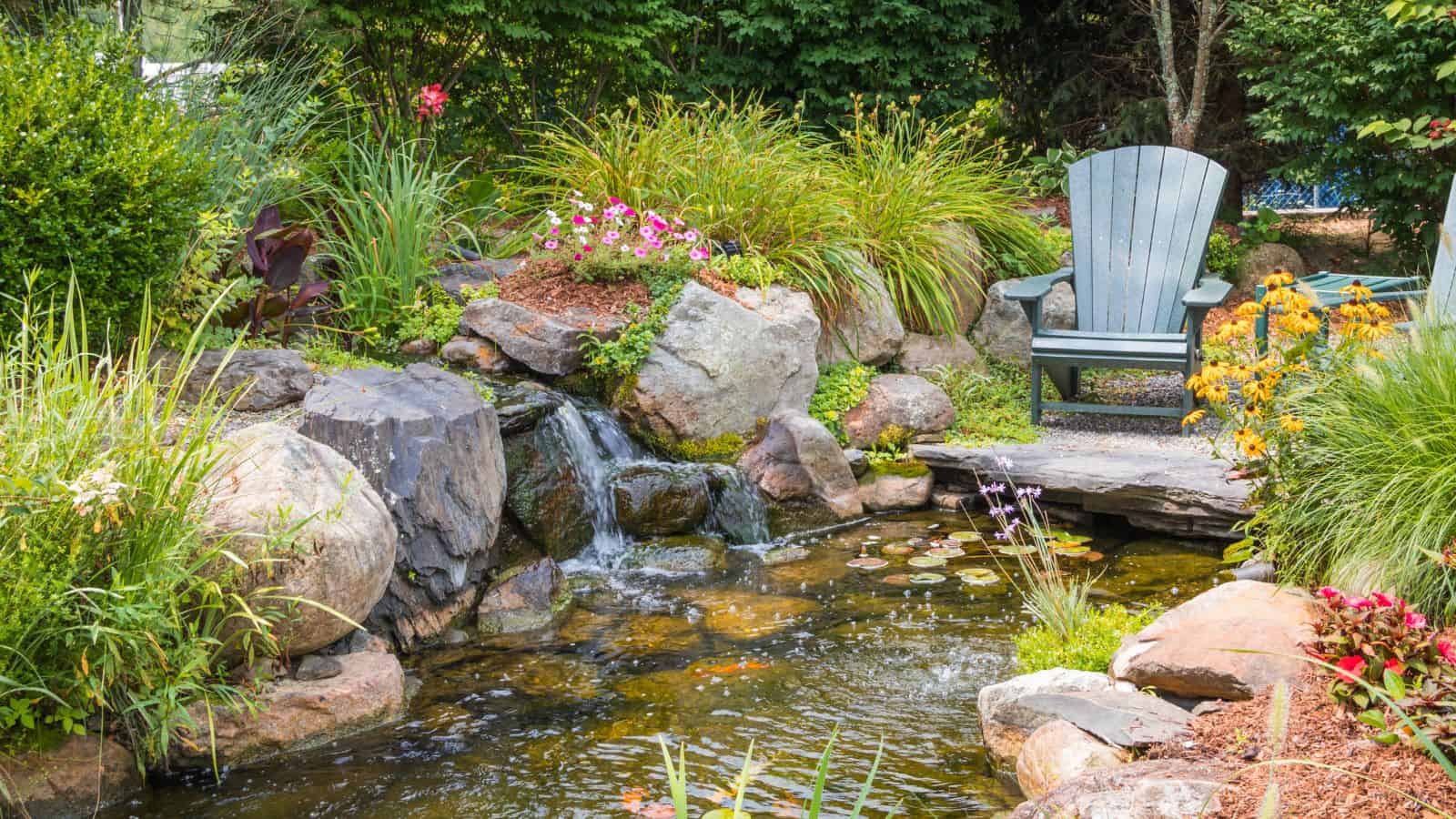Water features can add beauty, tranquility, and a sense of luxury to your garden. Whether you’re working with a small urban yard or a sprawling estate, there are many ways to incorporate water features into your landscape. Here’s how to do it.

Choose the Right Water Feature
The first step in incorporating a water feature into your landscape is to choose the right type for your space and needs. Consider the following options:
- Fountains: Fountains come in various styles and sizes, from small tabletop fountains to large, elaborate structures. They add a soothing sound of flowing water and can serve as a focal point in your garden.
- Ponds: A pond can provide a habitat for aquatic plants and wildlife, creating a naturalistic look. Ponds can range from small, pre-formed units to larger, custom-built installations.
- Waterfalls: A waterfall can add movement and sound to your garden. It can be incorporated into a pond or installed as a standalone feature.
- Streams: A meandering stream can create a sense of tranquility and natural beauty. It requires more space and planning but can be a stunning addition to your landscape.
Determine the Location
The location of your water feature is crucial for its visual impact and functionality. Consider the following factors when choosing a location:
- Visibility: Place your water feature where it can be easily seen and enjoyed, such as near a patio, deck, or seating area.
- Sunlight: Some water features, like ponds with aquatic plants, require adequate sunlight. Ensure the location receives enough light for the plants to thrive.
- Proximity to Utilities: Ensure that your water feature is close to a water source and electricity if needed. This will make installation and maintenance easier.
Plan the Design
The design of your water feature should complement the overall style of your garden. Consider the following elements:
- Scale and Proportion: Ensure that the size of the water feature fits the scale of your garden. A small fountain may get lost in a large yard, while an oversized pond can overwhelm a small space.
- Materials: Choose materials that match the aesthetic of your garden. Natural stone, ceramic, and metal are popular choices for water features.
- Plants and Accessories: Enhance your water feature with aquatic plants, such as water lilies and reeds, and decorative elements like rocks, statues, and lighting.
Install the Water Feature
Installing a water feature can be a DIY project or something you hire a professional to handle, depending on the complexity. Here are some general steps:
- Preparation: Clear the area and mark the outline of the water feature. Dig the hole if installing a pond or set the base for a fountain.
- Installation: Follow the manufacturer’s instructions for installing the water feature. Ensure that all components are level and secure.
- Plumbing and Electrical: Connect the water pump and any necessary plumbing. If the feature requires electricity, ensure all connections are safe and waterproof.
- Finishing Touches: Add plants, rocks, and other decorative elements. Fill the feature with water and test the pump to ensure everything is working correctly.
Maintain Your Water Feature
Regular maintenance is essential to keep your water feature looking beautiful and functioning properly. Here are some maintenance tips:
- Cleaning: Regularly clean the pump, filter, and basin to prevent debris buildup and algae growth.
- Water Quality: Monitor the water quality and add treatments if necessary to control algae and maintain a healthy environment for aquatic plants and wildlife.
- Winter Care: In colder climates, take steps to winterize your water feature to prevent damage from freezing temperatures.
